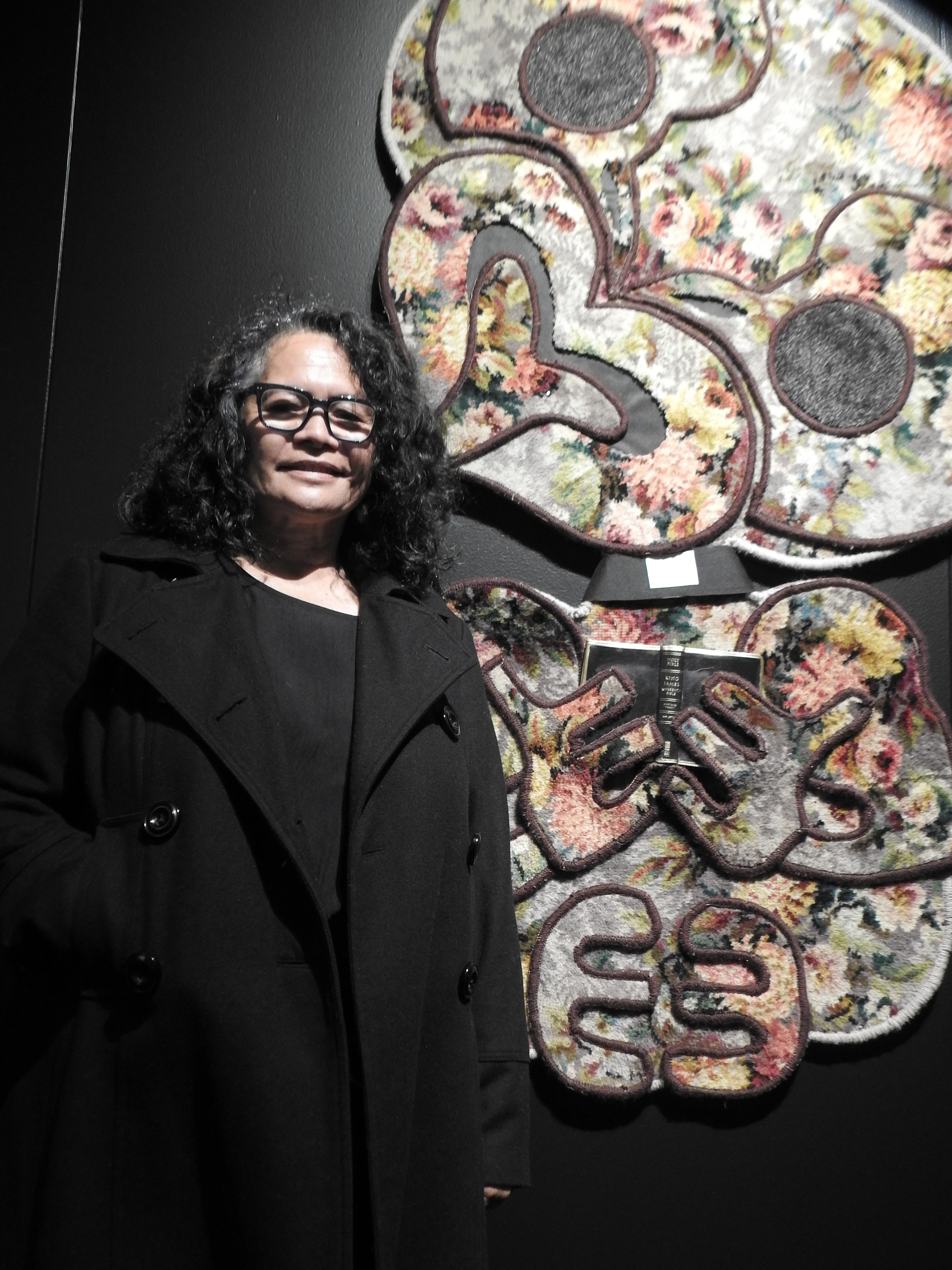Exhibition pays tribute to creative practices

Tribute: Glenda Hape stands beside Minita, her multimedia work honouring ministers in the Mātaatua rohe. Photos Kathy Forsyth E5578-06
Kathy Forsyth
A group exhibition at Whakatāne’s Te Kōputu a te Whanga a Toi – the library and exhibition centre – pays tribute to the creative practices of ringatoi (artists) who whakapapa to iwi in the Mātaatua rohe.
Titled He Tāwharau Mātaatua, the exhibition showcases works by around 14 artists, blending traditional and contemporary Māori art forms.
Among the featured artists are traditional weaver Sonny Hape and her mother, Glenda Hape, a weaver and contemporary artist.
Their pieces draw from the land, their heritage, and personal experiences.
Sonny’s work, titled Ngā Pou o te Whenua, consists of three hue (calabash) adorned with muka – finely prepared fibre from the harakeke (flax) plant.
The pieces are dyed with traditional, natural dyes including paru (iron-rich mud), kōrari (flax stalk), and kōkōwai (earth pigment), giving them rich, organic tones.
“My dad grows the hue at our homestead in Poroporo, and all the fibre was harvested from harakeke grown there too,” said Sonny.
The first piece reflects the view from their home and the three pou around it – the river, mountain, and marae.
The second shows the changing direction of the river, and the third is a nod to the whitebait that swim in it.
“Each tāniko piece represents one of these pou, which anchor me to this land and my identity as Ngāti Awa.”
Now based in Tauranga, Sonny travels weekly to Poroporo to work with her mother at The Fibre Room, their recently established weaving business.

Sonny said she favoured working with the muka, or fibre, of the harakeke leaf, because of its depth and detail.
Everything is done by hand – from scraping the flax leaf with a shell to extracting and preparing the fibre and dyeing with materials from the land.
“I love how intricate it is and how much work goes into producing something. It takes a lot of time and effort to get to the end point.
“A friend once said weaving is the most traditional Māori art form and the only practice where you still use traditional tools.”
One of those materials, paru, has become rare due to environmental changes.
“The paru we used was harvested over 10 years ago,” she said.
They call it “black gold” – it is that precious.
Glenda Hape, of Ngāti Pūkeko and Ngāti Awa – Ngāti Rangataua, contributed a work titled Minita, shaped like a tiki and made from Axminster carpet, wool, and paint.
The piece is a tribute to ministers in the Mātaatua rohe, including her late brother, Butler Brown.
“He had this beautiful carpet in his lounge. When he passed, I told his son if they ever removed it, I’d take it.”

She has used it in this work to remember him and honour all ministers who provide spiritual and cultural guidance in our communities.
A graduate of Te Whare Wānanga o Awanuiārangi’s now-discontinued Bachelor of Māori Visual Arts programme, Glenda’s work often blends traditional and contemporary weaving techniques, incorporating multimedia and sustainable materials.
“I love that I can jump from contemporary to natural fibres. I think sometimes you have to think out of the box when you are creating.”
Both artists are members of Te Roopu Raranga ki Rotorua, a weaving collective that meets several times a year and will exhibit next in Wellington this September.
Their work has also reached international audiences, including exhibitions at the Longhouse Education and Cultural Centre in Washington and contributions to the New Zealand art collection on display at the United Nations headquarters in New York.

He Tāwharau Mātaatua group exhibition
■ Where: Te Koputu a te Whanga a Toi – Whakatāne Library and Exhibition Centre
■ When: Until September 5